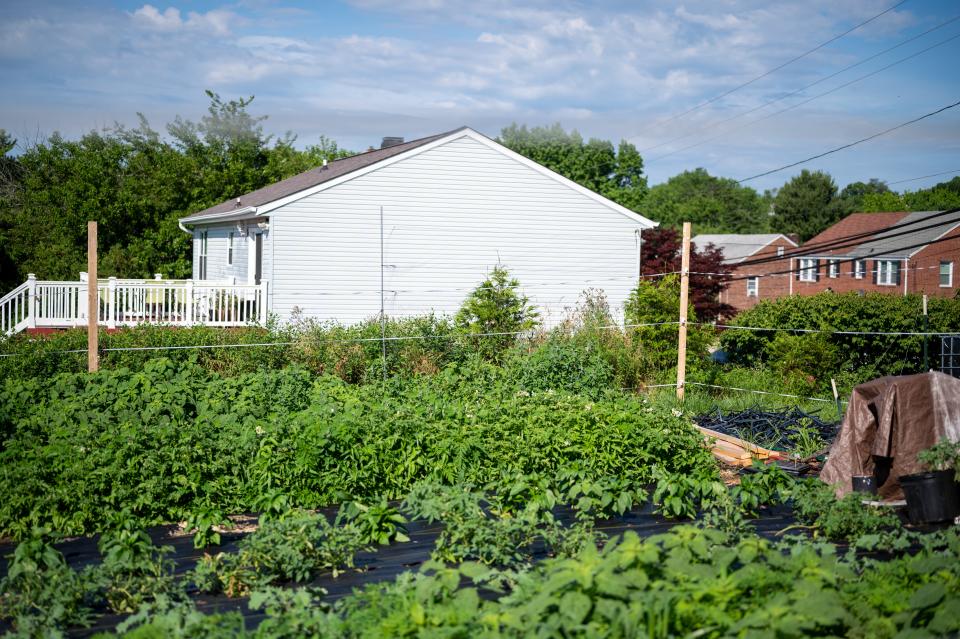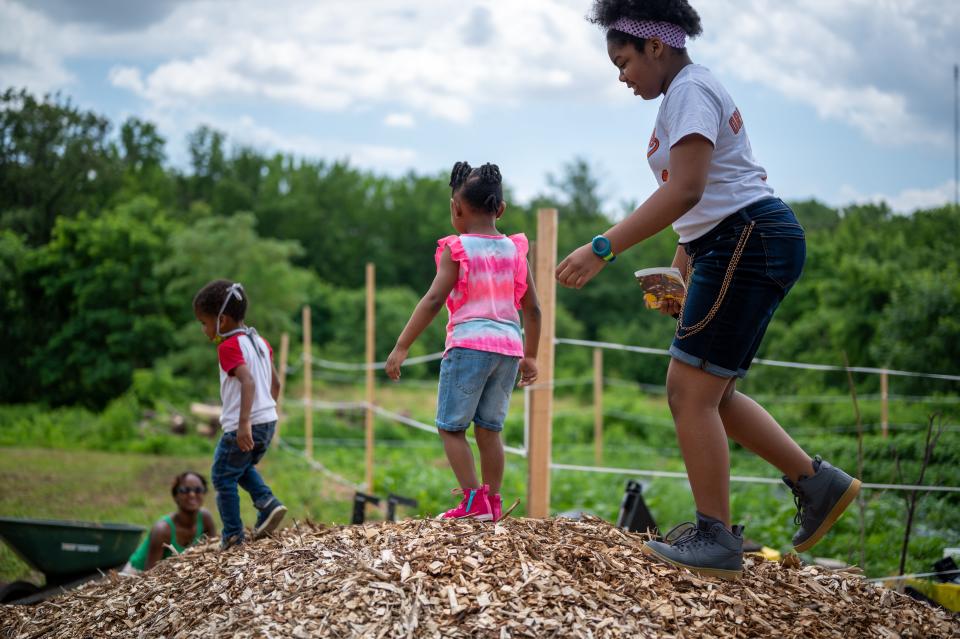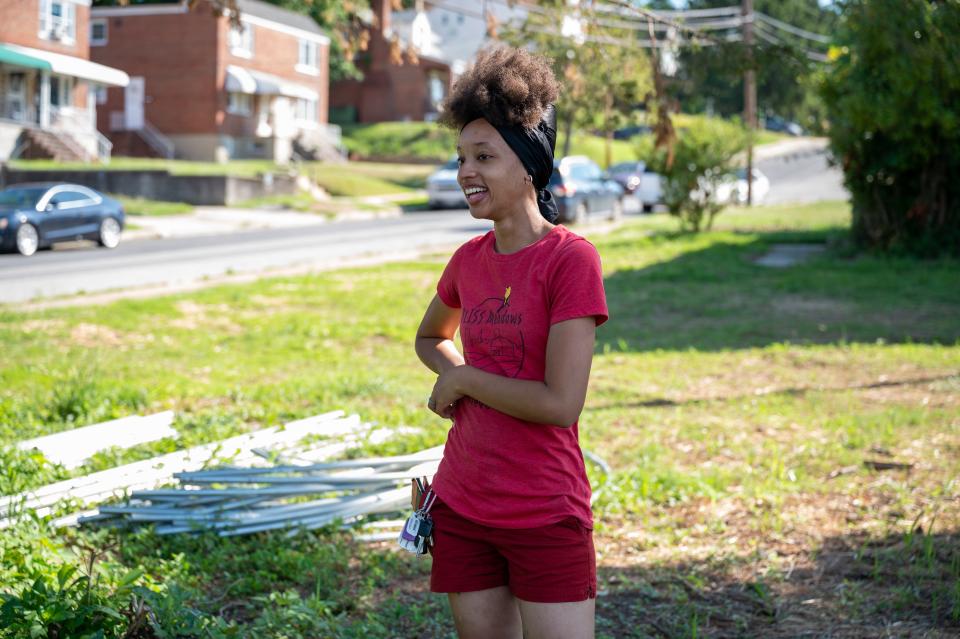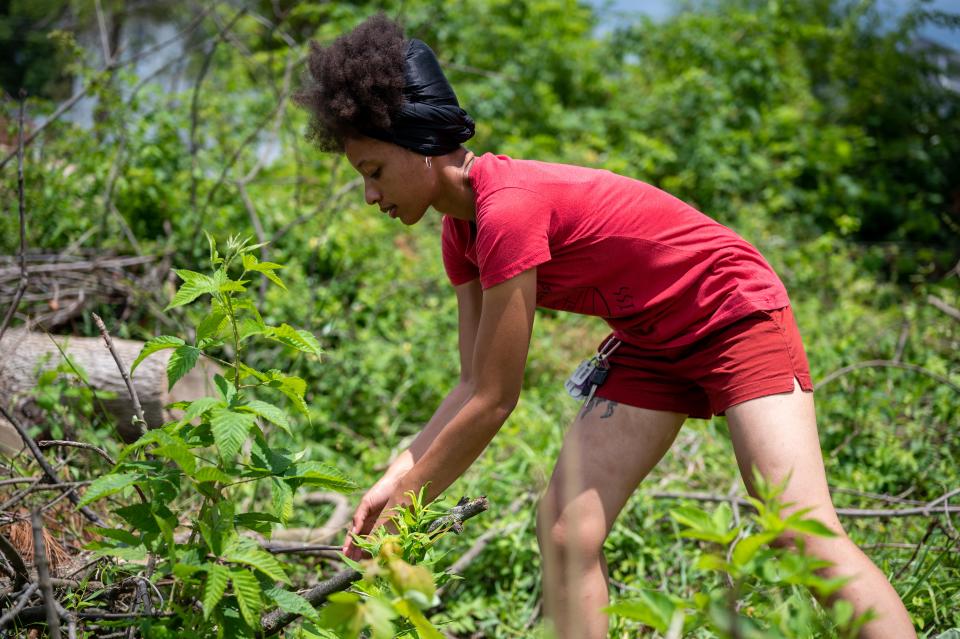This Community Garden in Baltimore Is Combining Environment and Education
Outdoor space has always been a luxury, but right now it’s priceless. Most of us are cooped up inside, but not everyone has access to parks and backyards. Quarantine has been a good time to develop new hobbies, and all over the country, people are taking this time to learn to garden and grow, either in their yard or in a shared space. Community gardens bring neighbors together and give local residents a refuge outside of limited home space. But what about when a neighborhood lacks the resources and nature education to explore the outdoors?
BLISS Meadows is a community project in Baltimore city focused on creating a public space for nature education, gardening, and farming. Atiya Wells, the founder and executive director of the project, wanted to create a place where urban dwellers, specifically Black people, could be educated about and feel safe in the outdoors. BLISS Meadows is in the second phase of its development and is in the process of renovating the land. We talked to Atiya about what that process currently looks like and about what inspired her to create a community space for Black people in an urban green desert.

Clever: Tell me how the BLISS Meadows project first came to be. What was that process like?
Atiya Wells: I wasn’t really a nature person until about three to four years ago. And then we had our kids, and we brought them along [on hikes]. And after a couple of times, the kids started hating it and then we were like, “Oh, my goodness. We made our kids hate nature. What have we done?” I did some research on how you get kids outdoors. And I realized that we were too focused on the destination. Kids just want to be outside. They don’t need a set agenda. From there I found this organization called Free Forest School, and I founded the Baltimore chapter, which is a program designed to get preschool-age kids outdoors with their families. People started asking questions like “Hey, do you know what this is?”
If I’m going to be leading entire families outdoors, I should probably know a little bit about what’s out here. So I started signing up for classes on plant identification and other kinds of nature knowledge. And I started realizing that I was the only Black person in the room. I signed up to do a little bit of unlearning and relearning of history, to learn about ancestral wounding and how the stories of our ancestors have been passed down from generation to generation and how dangerous it was for Black people to be outside.
Hearing those stories throughout time has fostered this fear of being outdoors for Black folks and especially in urban environments. I just wanted to kind of push back on that narrative and show that we can find good things in our neighborhoods. I found this park. I was like, “Oh, my gosh, literal woods around the corner from us. Like, am I in Narnia?” So I called this organization that we have in Baltimore called Baltimore Green Space. They help communities put land in a trust so that it can be developed if they use it.
I was like, “Oh, my gosh, this is perfect.” We can have environmental education and nature education to really highlight urban ecology because there are not that many places that really focus on that. That was kind of the start of the BLISS Meadows project. We can be like our full authentic selves, especially when it comes to the environment and environmental education because we are so left behind in that movement. So we really need people who look like us to educate us on these things. We have like a little slice of an urban farm on the BLISS Meadows property. And then I noticed that the house next door was vacant, and I was like, “Oh, my gosh, wouldn’t it be nice to have like an indoor space so we can have workshops and classes?” We can renovate it and get a kitchen so we can teach people how to grow, harvest, and cook healthier meals. Because most people think that eating healthy is eating a salad three times a day, but that’s not true.

It seems like the community got very involved with the process of you starting the farm.
Atiya: Yeah. We do a lot of community engagement, and one of our major initiatives is engaging with our community and ensuring that the community has a voice in the project and project design.
I sit on the board of our committee association, and I’ve been working very closely with our committee association president to really talk about how there are no green spaces in predominantly Black neighborhoods. You can literally pull up a map of almost any urban environment and you can see where the rich white people live, because of the amount of trees they have. Whereas in mostly predominantly Black and brown neighborhoods, it’s buildings or sidewalks. And so that’s what’s contributed to what they call the “urban heat island effect,” which is saying it’s hotter in cities because there isn’t that much green space.

How do you think people of color, parents of color, and kids of color across the country can help out in their communities and get involved with community gardening and farming?
Atiya: Having access to land is one of the major barriers to communities of color in doing any gardening or farming project. Most people rent properties, so they’re not comfortable beautifying the land that they don’t own. But for right now, we’re really engaging in-depth in our community and helping our folks have access to higher-quality food. We are the largest neighborhood in Baltimore city. We have over 23,000 residents, and we have one grocery store. And so there are so many things that our project touches on that are not unique to any urban environment. And I feel like as long as there’s a vision and good community backing, anything is possible.

The BLISS Meadows project is ongoing and will continue to grow—what does the immediate future look like?
Atiya: We’ve developed a five-year-phase end plan, and that’s just us really phasing into the neighborhood and really engaging with the community. What does it mean to have a farm so close by and be able to go to a space and harvest your own produce for you to cook dinner that night? Or having somebody available to answer questions you may have about a vegetable you may have never seen grow out of a plant before? We’ve only been working on the project for a year and we’ve gotten so much done. The next four years will really be building infrastructure. Unfortunately, coronavirus has really put a damper on a lot of plans that we have this year. Fortunately, we’ve had time to enjoy this pause and really hunker down on planning our processes and building up some infrastructure so that when it’s safe for us to gather again, we have quality space to receive people.
What’s your ideal future for BLISS Meadows? What’s your vision for the garden, the farm, and the community?
Atiya: We’ve been calling it a 10-acre land-reclamation project. So the woods are seven acres. The meadow is two and a half. And then the house that we have sits on half an acre. So [the goal is] utilizing all 10 acres of that space within our community for environmental education, nature education, gardening, farming education, or even just community gatherings. My ideal goal is within 5 to 10 years to have a forest school running out of the woods here. I envision the next 5 to 10 years is just going to be filled with programming. It’ll be so much a part of the community that you wouldn’t even know that it wasn’t here to begin with. We’ll be getting some chickens and goats within the next few weeks, so that’s going to be exciting for the kids—to see and to be able to play with and hold chickens. Because I grew up in north New Jersey, I never saw a live chicken until I was an adult. So having all of these things close by will play a huge part in the community. And we’ll also be able to be a model of how a predominantly Black community can reclaim space for good, for the better.

Originally Appeared on Architectural Digest

